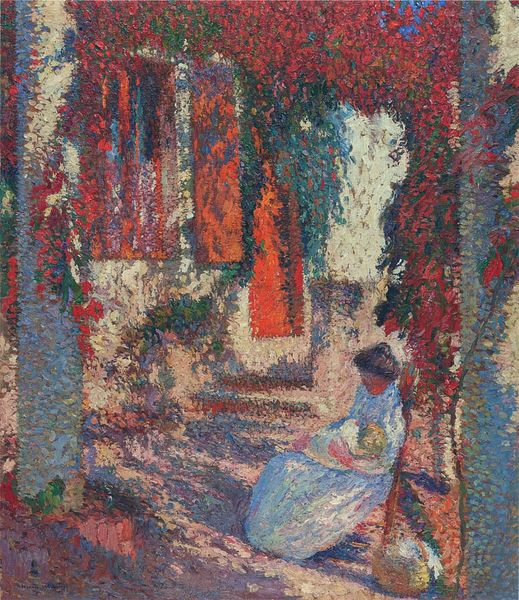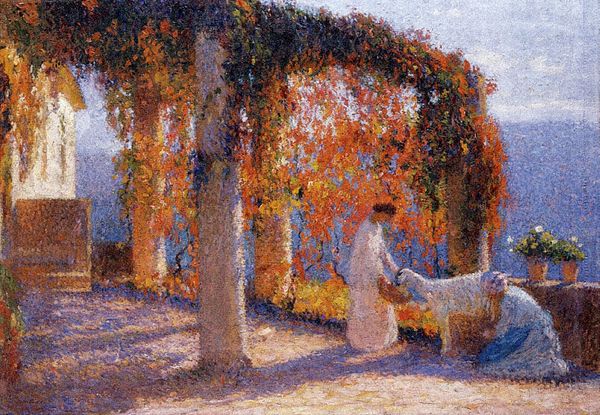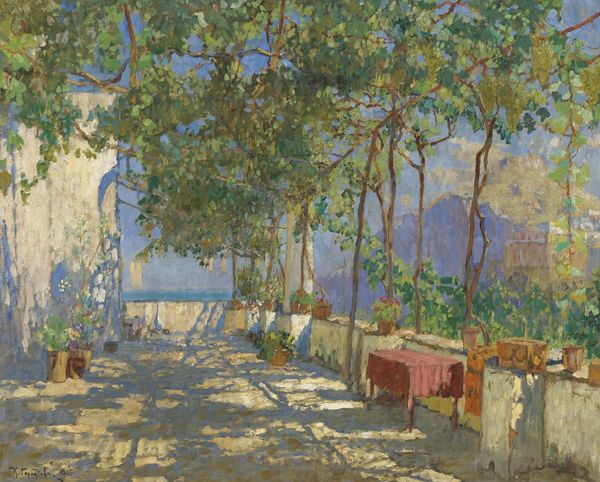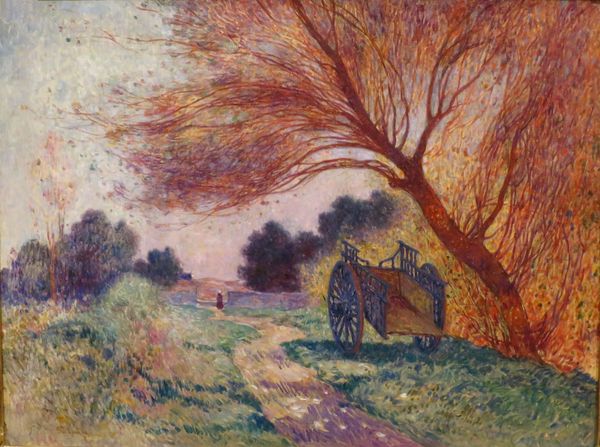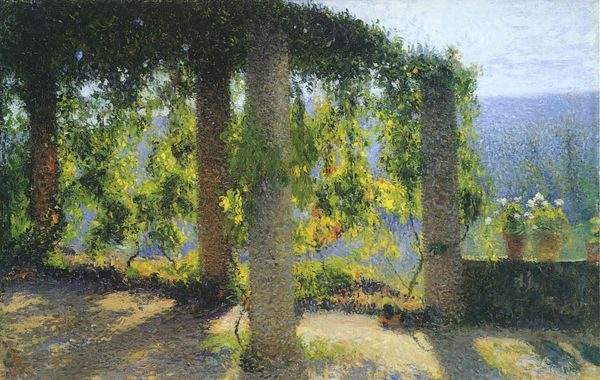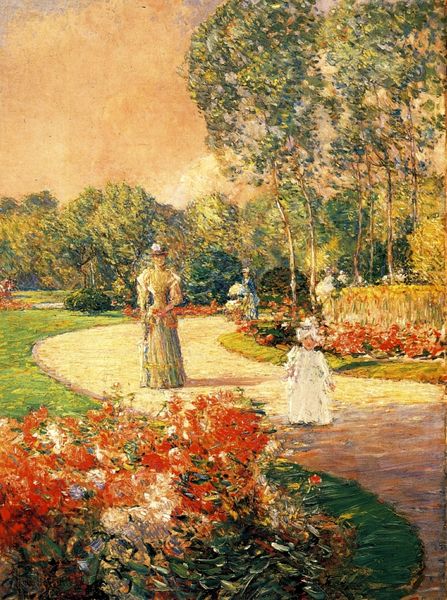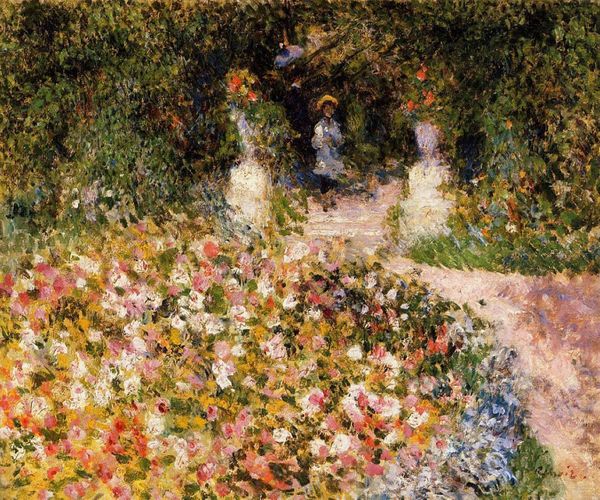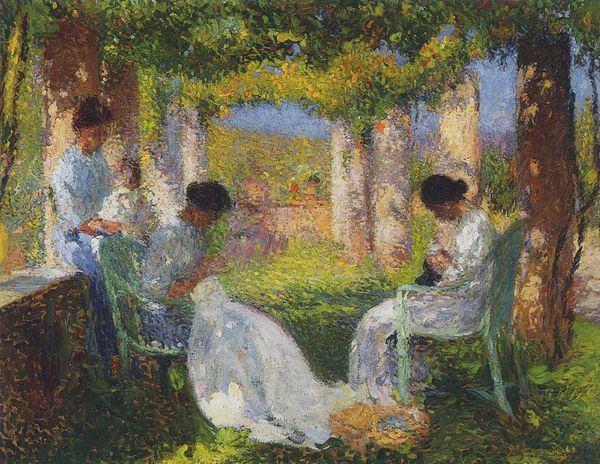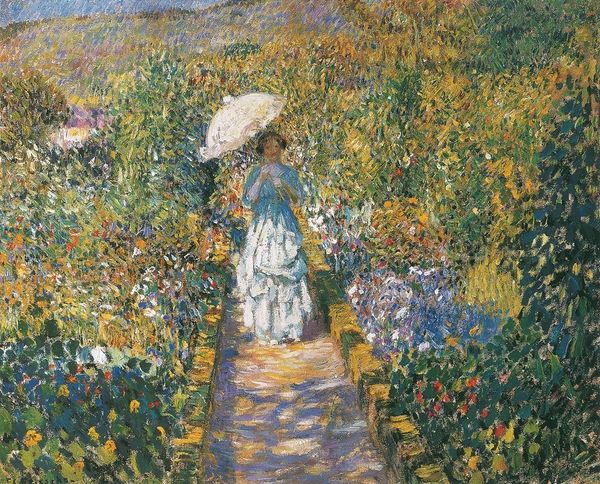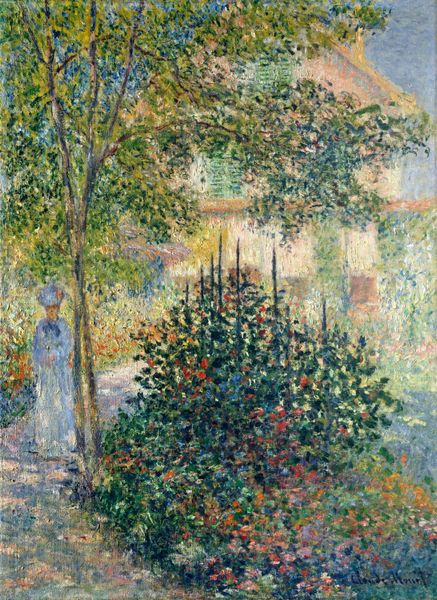
painting, plein-air
#
portrait
#
painting
#
impressionism
#
plein-air
#
landscape
#
impressionist landscape
#
genre-painting
Copyright: Public domain
Editor: Here we have "Young Women in Tonnelle" by Henri Martin. It looks like an Impressionist painting, full of little dots of color, depicting two women under what appears to be a flower-covered pergola. I'm immediately struck by how private the space seems, like a world apart. How would you interpret the scene? Curator: It's tempting to see this as a simple snapshot of leisure, but it’s interesting to think about where and how these images circulate. Genre paintings like this became popular during a time of immense social change. Paintings like these offered viewers idealized versions of modern life, particularly life for women. Does this painting strike you as an inclusive vision of public life? Editor: Not especially. It feels very…contained, almost claustrophobic. Who got to enjoy these idyllic spaces, and who was excluded? Curator: Exactly. Martin's work, while beautiful, often glosses over the social and economic realities that shaped that era. He benefits from the patronage of those who benefited from an unjust distribution of resources, and those power structures trickle down to affect the type of work that is deemed "art." The imagery, the setting...these were deliberately constructed. Editor: So, the focus on beauty and leisure might actually obscure more complex social dynamics at play. What purpose did art like this serve back then, and does it still serve that purpose today? Curator: Then, as now, these works were instrumental in shaping ideals, projecting particular class aspirations and aesthetics as something universally desirable. These are the standards of "beauty" for many in power. By understanding the social context, we can move beyond a superficial appreciation and critically examine the painting's role in perpetuating those power dynamics. Editor: That's given me a lot to think about – how something that appears so beautiful on the surface can have such complex historical and social implications. Curator: Indeed. The most beautiful artworks have often benefitted, unfortunately, from historical exploitation and the aestheticization of class divides. Recognizing the historical contexts help reveal this, helping us more completely reckon with what we value in our art today.
Comments
No comments
Be the first to comment and join the conversation on the ultimate creative platform.
